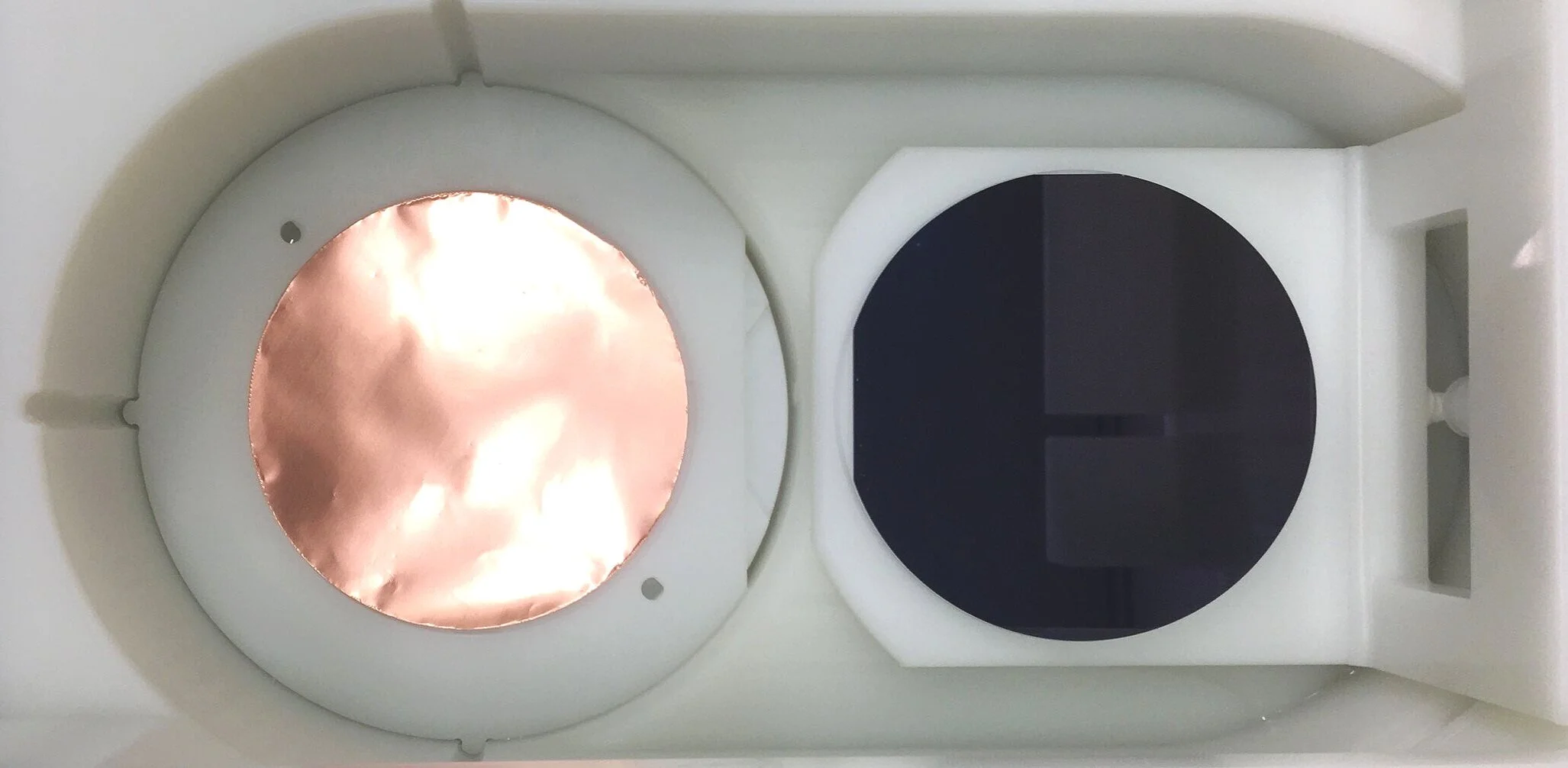The ETX model 2DTT-1 2D Transfer Tool automates wet transfer processing of graphene and other 2D materials. The patented design includes a unique process vessel, combined with careful flow control, to minimize turbulence. Target substrates are kept clean and dry until final deposition of the 2D layer. Novel positioning mechanisms minimize lateral motion of the 2D sample throughout the process, and ensure the 2D layer lands flat on the target.
For more information
The model 2DTT-1 eliminates the inconvenience and inconsistency of the manual wet-etch transfer method, allowing you to perform reliable transfers onto any substrate in your own laboratory. Simply load your prepared 2D sample and target substrate into the process vessel, start the process running and walk away. A wide range of material sizes can be accommodated with an available array of sample guides and substrate platforms. Multiple small samples (e.g. up to a dozen 1 cm x 1 cm ) can be simultaneously transferred to separate target substrates.
A resistive touch screen provides a convenient user interface. Users can create and store their own custom transfer programs. The number and duration of etch and rinse steps, fill and drain rates, are all programmable. In addition, the UTILITY screen supports manual operation and calibration.
The vessel design, and pumpless drain and fill mechanism, result in pulsation-free, low turbulence liquid flow. This gentle deposition process eliminates transfer-induced damage and wrinkling, typical of manual methods, resulting in increased device yield per transfer. This is particularly important when depositing onto previously processed targets with complex topographies.
simply Load 2D material sample and target substrate into the process vessel. As shown here, the tool is Configured to transfer a 4” (100 mm) diameter sample of CVD-Grown graphene on Cu, This is placed within a circular sample guide. The target SUBSTRATE is a 100 mm SiO2-coated Si wafer, held on a mating substrate gantry platform.
Filling and draining of the process vessel is performed from beneath the 2D sample, Floating both the sample and guide. All etch and rinse steps take place in the lower portion of the process vessel. The target substrate is kept clean and dry until the final deposition step
Filling the vessel beyond the target height floats the 2D sample and guide above, allowing the target to be positioned below. Slowly draining the vessel lowers the 2D sample onto the target.
after deposition and air dry at room temperature, pmma-coated graphene sample is free of macroscopic wrinkles.
Resistive touch screen interface (compatible with gloved fingers) allows user to create, store and run transfer programs. Utility functions include calibration tools and manual control.
Once etching is complete, a series of rinses can be performed. The 2D sample never leaves the surface of the liquid, eliminating a significant source of transfer-induced damage.
PMMA-coated graphene sample deposited on SiO2/Si wafer after draining process vessel and before air drying.
Optical image of graphene after transfer to oxide-coated (98nm SIo2) Silicon wafer and PMMA removal. Dark spots are bi-layer/ muli-layer islands.
Raman image showing 2D peak intensity across 20 x 20 area. Bright spots at locations of bi-layer/tri-layer graphene. Blue dot indicates location of mono-layer spectrum at right.
Spectrum collected at blue dot in Raman image at left.
Same as image above, with blue dot now indicating location of bi-layer.
Spectrum collected at blue point in Raman image at Left. Strong D-peak due to edges of small second layer.














